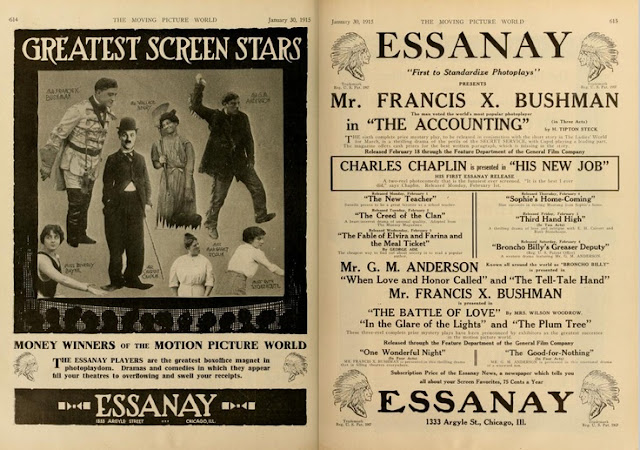Released in 1922 by Educational Pictures, "Plastigrams" was presented by E.W. Hammons using the Ives-Leventhal stereoscopic process. Much like the traditional "3-D" comics and postcards, the film used offset blue and red images to create its dimensional effect. Although this effect seems rather crude to us now, it was groundbreaking for audiences at the time. Upon viewing it for the first time, The Film Daily described the experience like this,
“The effect is, at first, startling and then amusing. The object of ‘Plastigrams’ is apparently to afford thrills for the audience. You look through the glasses and the objects on the screen appear to jump out at you. For instance, pictures of a crawling turtle, after being viewed for a moment, take the form of actuality and the turtle appears to be right up to your nose. Objects selected are, of course, of a nature to provide thrills such as, a hose pointed toward you, traffic jams in which you fear an impact at any moment, etc. A first rate novelty and wholly amusing.”When Lee DeForest began experimenting with recording sound on film, "Plastigrams" even became one of the first films to boast it during its re-release in 1924 -- three years before the debut of the talkie "The Jazz Singer." Even the marketing tactics used to advertise the film were inventive and ahead of their time. In one theater, an 11" x 14" lobby card was put on display. The card displayed images that used the same 3-D technique as the film, and a pair of 3-D glasses was suspended from the ceiling, allowing patrons to witness the effect first-hand before even purchasing a ticket.


















